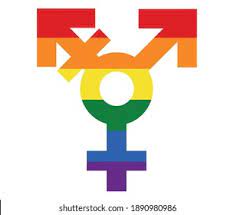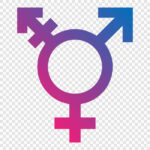If you’ve ever heard the term "Estrogen Face" and wondered what it means, you’re not alone! Many people are becoming increasingly aware of how hormones can impact our skin’s appearance. Changes like puffiness, altered facial contours, or a general loss of radiance can all be tied back to estrogen levels in the body. In this article, we’ll dive deep into what "Estrogen Face" really is, the science behind it, and how you can manage its effects on your skin.
What is "Estrogen Face"? Let’s Break it Down!
"Estrogen Face" is a colloquial term that refers to the changes in facial appearance that can occur due to fluctuating estrogen levels, particularly during various stages of a woman’s life, such as puberty, pregnancy, and menopause. The skin can become puffy or fuller as estrogen influences fat distribution and collagen production. This term doesn’t necessarily imply a negative connotation; rather, it highlights how our bodies undergo transformations that can be noticeable on our faces.Forced Fem FictionBorn Man
The phenomenon is not exclusively limited to women; men also have estrogen, albeit in lower amounts. As hormonal levels shift, whether due to age or health conditions, both men and women can experience changes that might lead to what some might refer to as "Estrogen Face." Understanding this term can help normalize the conversation around hormonal changes and their visible effects on our skin.
The Science Behind Estrogen and Skin Changes
Estrogen plays a crucial role in maintaining skin health. This hormone stimulates collagen production and promotes skin hydration, helping to give the skin a plump and youthful appearance. When estrogen levels are high, the skin often looks more radiant and elastic, which is why many women may notice a "glow" during certain phases of their menstrual cycle or during pregnancy.
However, when estrogen levels drop—such as during menopause or certain health issues—the skin can lose its elasticity, leading to sagging or thinning. This reduction in collagen can also result in dryness, making the skin appear dull or lifeless. Understanding these hormonal effects can empower individuals to make informed decisions about skincare, as adapting to these changes is key to maintaining a healthy complexion.
Signs You Might Be Experiencing Estrogen Face
If you’re wondering whether you might be experiencing Estrogen Face, there are several signs to keep an eye out for. One of the most common indicators is facial puffiness, particularly around the cheeks and jawline. This can be accompanied by a more rounded appearance, which may be attributed to increased fat deposits related to estrogen fluctuations.
Other signs to consider include dryness, texture changes, or a noticeable decrease in elasticity. You might also notice increased pigmentation, which can occur as hormonal changes influence melanin production. If you see any of these changes, it might be time to evaluate your hormone levels and see how they might be affecting your skin.
How Age and Hormones Affect Your Skin’s Appearance
As we age, our hormone levels naturally fluctuate, which can have a significant impact on our skin health. During puberty, for instance, increased estrogen levels lead to a more vibrant and youthful appearance. However, as women approach menopause, estrogen levels decline, often resulting in thinner, less resilient skin. This can lead to the development of fine lines and increased sagging, making age-related changes more pronounced.
Men also experience hormonal changes, particularly through conditions such as andropause, which can lead to similar effects on skin appearance. While the changes may not manifest in the same way, decreased testosterone can still influence skin quality. Understanding these age-related hormonal shifts can help you better navigate your skincare needs at different life stages.
Estrogen Levels: The Impact on Your Beauty Routine
Your beauty routine may need some tweaking if you’re experiencing the effects of Estrogen Face. For those with fluctuating estrogen levels, incorporating products rich in hyaluronic acid can help retain moisture and improve skin texture. Additionally, using serums packed with antioxidants can combat oxidative stress and support a radiant complexion.
It’s also essential to be mindful of the ingredients in your skincare products. Retinol can be a fantastic addition to combat aging effects, but it may not be suitable for everyone, especially those with sensitive skin. Consulting with a skincare professional can help tailor your routine to your specific hormonal needs while promoting a healthy glow.
Tips to Combat Estrogen Face and Boost Your Glow
To combat the effects of Estrogen Face, a consistent skincare regimen is key. Regular exfoliation can help remove dead skin cells and promote cell turnover, leading to a fresher complexion. Incorporating a gentle exfoliating scrub or chemical exfoliant, like glycolic acid, can improve skin texture and brightness.
Hydration is equally important! Drink plenty of water and use moisturizers that contain nourishing ingredients like ceramides and peptides. Consider adding a facial oil to your routine to provide an extra boost of moisture and improve skin elasticity. These steps can help maintain that coveted glow, even in the face of hormonal changes.
Natural Remedies to Balance Hormones and Skin Health
When it comes to balancing hormones and improving skin health, natural remedies can be quite effective. Incorporating foods rich in phytoestrogens, such as flaxseeds, soy, and chickpeas, may help maintain estrogen levels. These plant-based compounds can mimic estrogen in the body, potentially mitigating some of the effects of hormonal fluctuations on your skin.
Additionally, managing stress through practices like yoga or meditation can positively impact hormone levels. Regular exercise not only helps regulate hormones but can also enhance blood circulation, giving your skin a healthy flush. Small lifestyle changes can go a long way in supporting both your hormonal balance and skin health.
When to Consult a Doctor About Your Skin Changes
If you notice significant changes in your skin that you suspect are linked to hormonal fluctuations, it might be time to consult a healthcare professional. Skin issues can sometimes be symptomatic of underlying hormonal imbalances, which may require medical intervention. A doctor can perform tests to evaluate your hormone levels and determine if any treatment is necessary.
Furthermore, if you experience severe skin conditions such as persistent acne, rashes, or extreme dryness, it’s crucial to seek medical advice. These issues can affect your quality of life and may need a tailored treatment plan. Regular check-ins with a healthcare provider can ensure that any hormonal changes are managed effectively.
In summary, "Estrogen Face" highlights the fascinating connection between our hormones and skin appearance. By understanding the science behind these changes and recognizing the signs, you can better support your skin’s health as you navigate through different life stages. Remember, while hormonal fluctuations are natural, there are many strategies—both in skincare and lifestyle—that can help you maintain a radiant glow. Don’t hesitate to reach out to a doctor if you’re concerned about significant changes; after all, your skin deserves the best care possible!


